The “content marketing funnel” or “marketing funnel” has been an industry buzzword amongst content marketers for quite some time. Since the content marketing funnel mirrors a typical buyer’s journey from awareness to consideration to purchase, creating content that’s catered to each step of the funnel is crucial to acquiring consumers at different stages of their decision-making process.
Strategizing with the content marketing funnel evidently works — but only when it comes to customer acquisition. Customer retention, loyalty and advocacy are whole different domains that the typical content marketing funnel fails to adequately address. When it comes to building long-term, sustainable brand growth, marketers need to rethink the traditional model of the content marketing funnel and see it as a dynamic loop rather than a linear funnel.
Since the content marketing funnel strives to mirror the buyer’s journey, then it should also reflect the circularity of consumer behavior and consider the fact that most buyers continue to interact with a brand even after they make a purchase. In other words, the aftermath of the purchase matters too, and that’s where the loop model comes in.
But what is a content marketing funnel?
First things first, it’s essential to fully understand the definition and uses of the conventional content marketing funnel before reimagining it as a marketing loop.
The content marketing funnel is a marketing model that visualizes the journey that potential customers go through from initial need recognition to purchase. The content marketing funnel is typically used as part of a larger content marketing strategy and is helpful in guiding content creation for users at different stages of the funnel. Although there are many different ways to categorize multiple stages of the funnel, most marketers separate it into three main sections: top of funnel (ToFu), middle of funnel (MoFu), and bottom of funnel (BoFu). These three sections are also commonly referred to as the awareness, consideration, and conversion stages respectively. Let’s take a closer look at some examples and KPIs for each of the three stages:
Stage 1: Top of Funnel (ToFu) or Awareness
Top-of-funnel content targets consumers at the beginning of their purchasing journey and aims simply to increase consumer awareness of the brand, product, or service. These are customers that have little to no previous experience with the brand and are open to discovery and exploration rather than consideration, evaluation, or purchase.
Social media posts are a common type of top-of-funnel content due to their organic discoverability and high engagement potential. This is particularly relevant given social media platforms’ industry-wide shift towards a content discovery algorithm model that is primarily interest-based rather than connection or social-based, thus making it easier for users to discover brands through their everyday social media usage.
For example, razor brand Billie portrays their product in a series of culturally relevant, visually engaging Instagram posts to build familiarity with and awareness from potential customers. Since the goal of ToFu content is to drive awareness, marketers will look at more impression-related metrics such as social shares, average view time, impressions, or number of visitors.
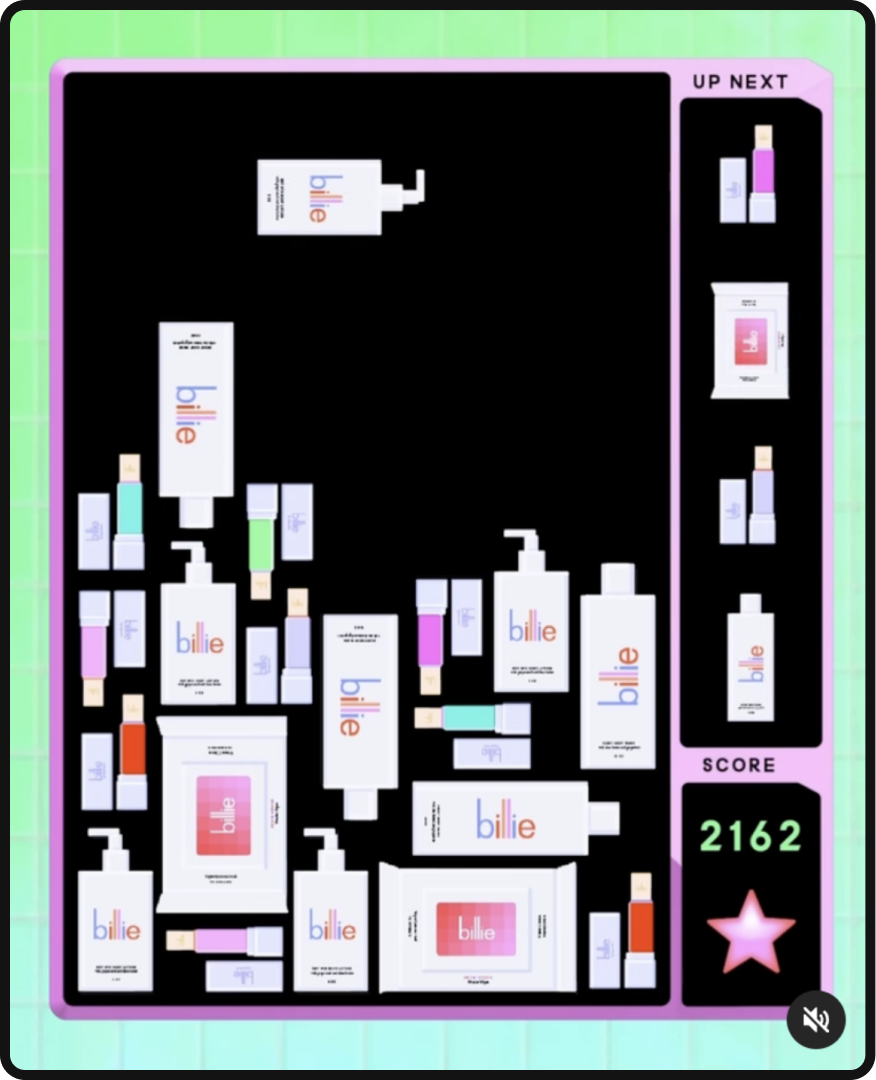

Stage 2: Middle-of-Funnel (MoFu) or Consideration
Middle-of-funnel content targets consumers that may be interested in a brand but aren’t ready to make a purchase just yet. These customers are likely weighing the pros and cons of different alternatives, and are looking for more information on their potential options in order to help them make a decision. As a result, the key to creating MoFu content is to make sure that you are providing information that aids the potential customer in their decision-making and evaluation process.
Common content types at the consideration stage include blog posts, podcasts, and infographics — content pieces that are informative and educational so as to answer the questions that a MoFu customer might have about the brand. Gut health supplement brand, Hilma, for example, does a good job of using blog content and website tools to educate potential customers on the science behind their products. KPIs that help measure the success of MoFu content includes comments, saves, time on page, and engagement rate.
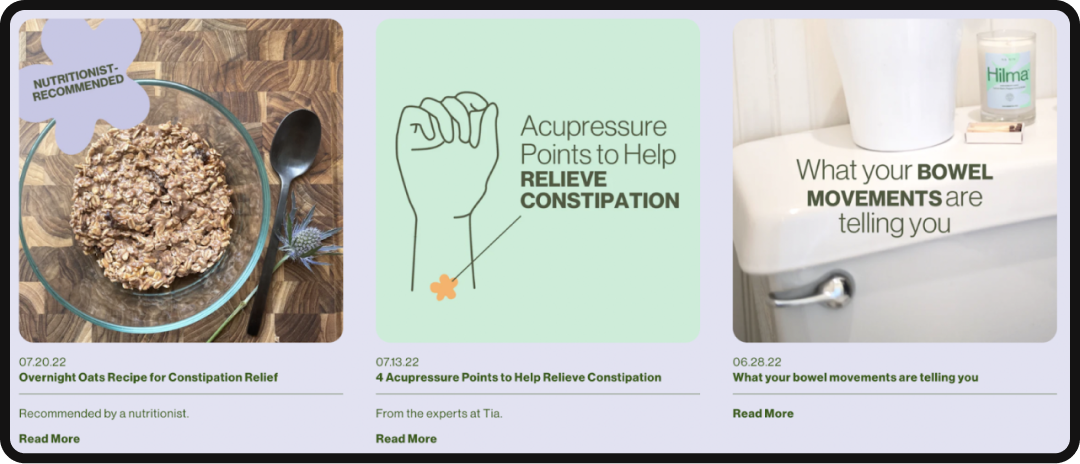
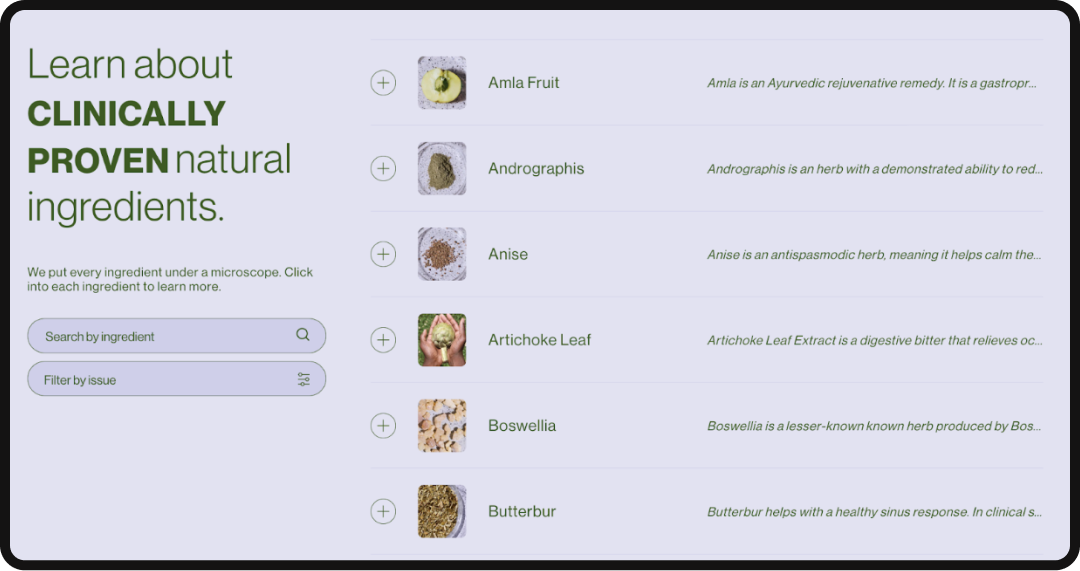
Stage 3: Bottom-of-Funnel (BoFu) or Conversion
Lastly, bottom-of-funnel content targets customers that are willing, able, and ready to make a purchase — they just need one final push. These are customers that have already been through the awareness and consideration stages and have enough brand recognition and information to make their decision. Therefore, BoFu content focuses primarily on driving conversions, and will usually use a tone of urgency or compelling CTA buttons to prompt immediate action.
Emails are an effective bottom-of-funnel content piece due to their combination of imagery, messaging, and clickable CTA buttons. Due to a large amount of customization that can be incorporated into emails, they can be designed to specifically target people with high intent at this stage of the funnel, especially since these are consumers that have already interacted with the brand and opted into receiving emails. Loftie’s email content uses product imagery and social proof to urge customers to click the “pre-order” button and make a purchase. As a relatively revenue-driven content stage, BoFu metrics revolve around whether or not customers actually make a purchase, which is easily reflected in conversion rate, number of payments, or click-through rate.
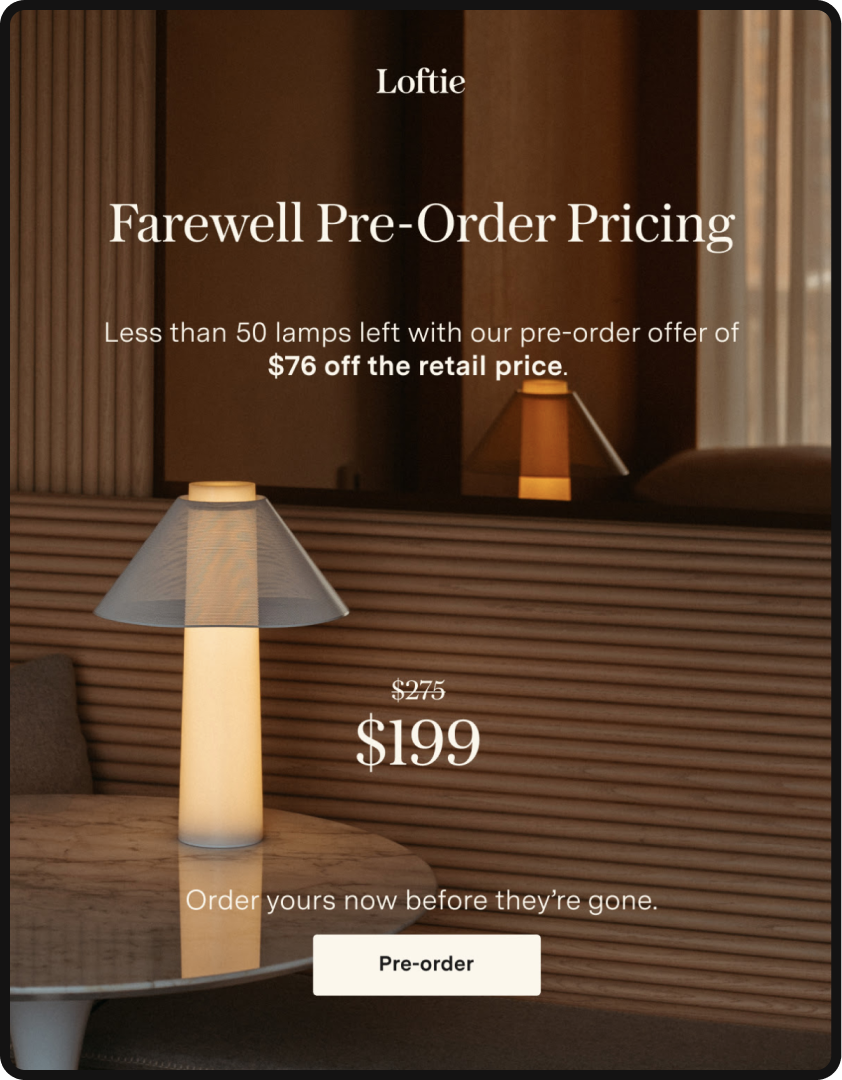
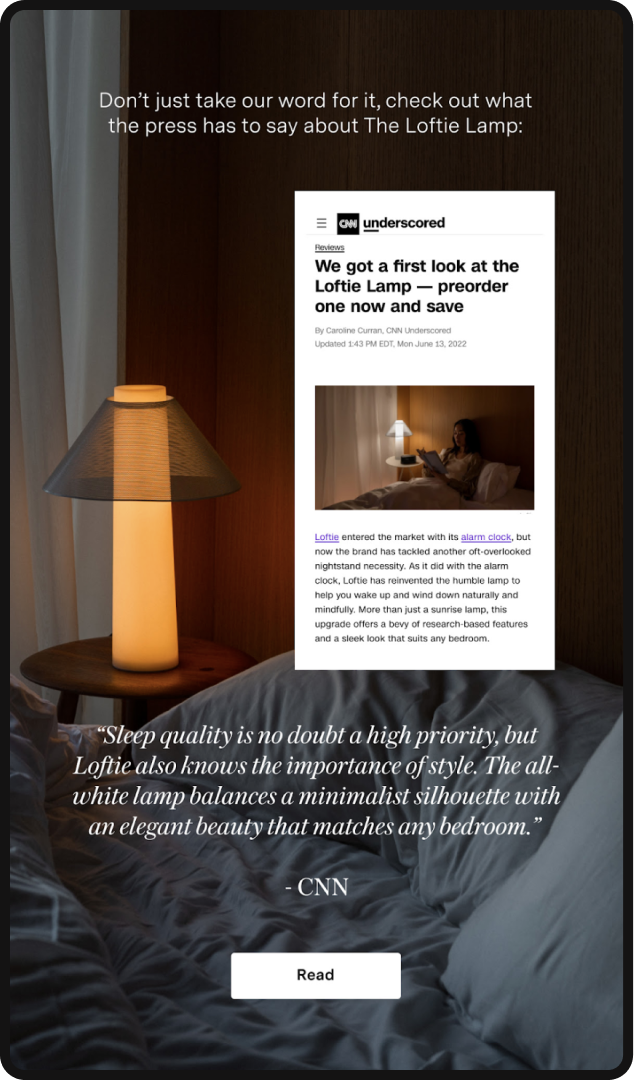
How does the content marketing funnel mirror the buyer’s journey?
The buyer’s journey looks slightly different for every consumer, but many go through the same phases of need recognition, information search, alternative evaluation, purchase decision, and post-purchase behavior. The reason why the content marketing funnel is such an integral part of brands’ content marketing strategies is that it is built specifically to mirror the buyer’s journey. ToFu content targets customers in the need recognition phase, MoFu content targets customers in the information search and alternative evaluation phase, and BoFu content targets customers in the purchase decision phase.
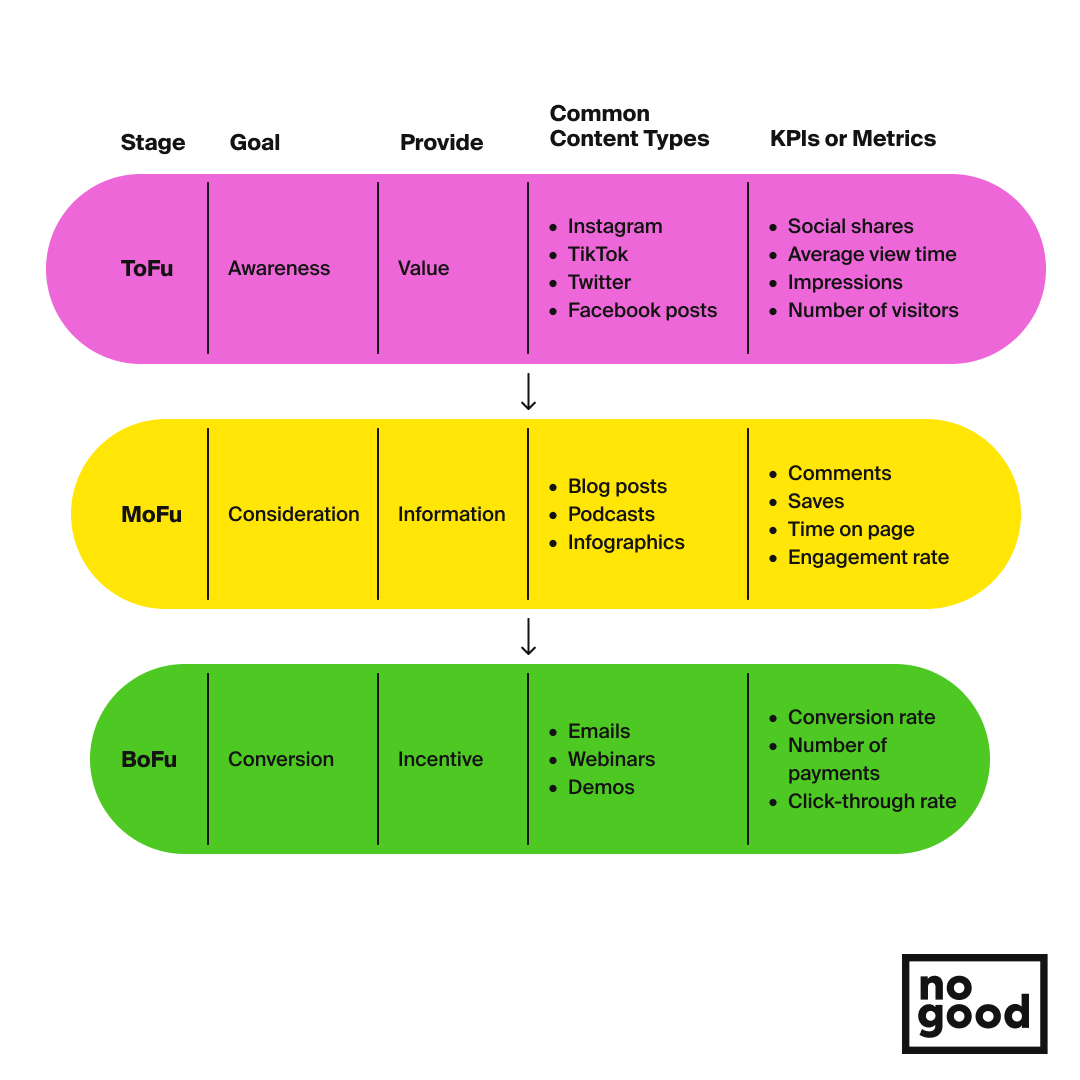
What the content marketing funnel fails to address, however, is that the buyer’s journey does not end with revenue. The well-known “AARRR” funnel (or “pirate funnel”) places revenue at the bottom of the funnel, after the acquisition, activation, retention, referral, and revenue. Instead of seeing revenue as the end of the buyer’s journey, the loop model places revenue in the middle instead, and uses retention and referral as a way to drive further acquisition — and hence the cycle repeats itself.
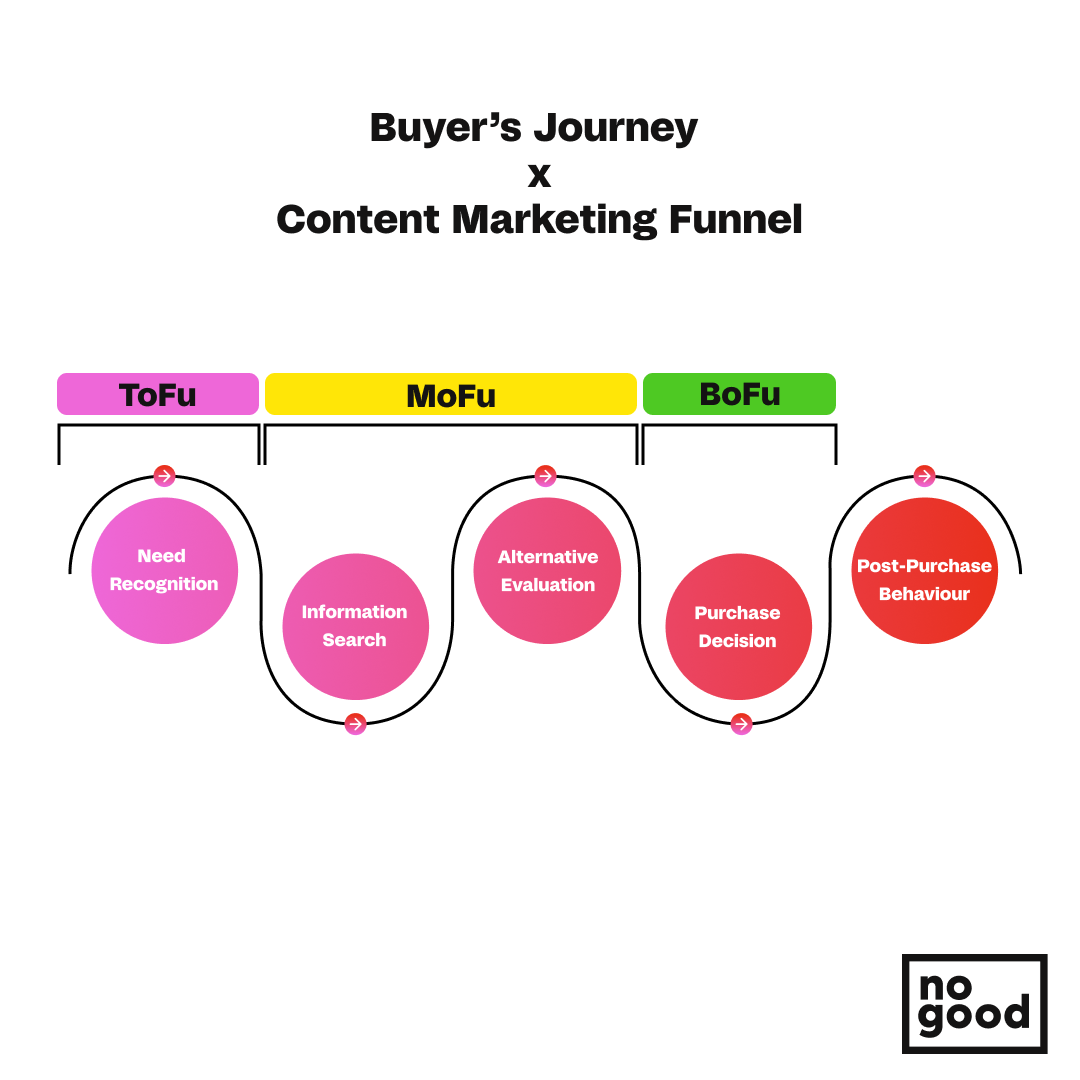
Moving from the funnel model to the loop concept
The concept of the content marketing loop takes into consideration the importance of the post-purchase behavior stage of the buyer’s journey, and uses content targeted towards that phase to build loyalty, retention, and most importantly — advocacy.
The problem with the content marketing funnel model is that it assumes that the buyer’s journey ends after their purchase. It assumes that the buyer makes a one-off purchase that is not to be repeated ever again and that the buyer will not share their opinions on their purchase with others through social media, product reviews, referral programs, or word of mouth. Both of these assumptions are untrue, and to ignore them would be to forgo an opportunity to build a self-compounding acquisition loop that will drive organic growth for your brand.
What separates a funnel from a loop is that a loop is never-ending and always evolving. When brands invest in fostering brand loyalty with existing customers and create content that is easily shareable, those loyal customers will serve as authentic advocates for the brand or product and naturally lower customer acquisition costs.
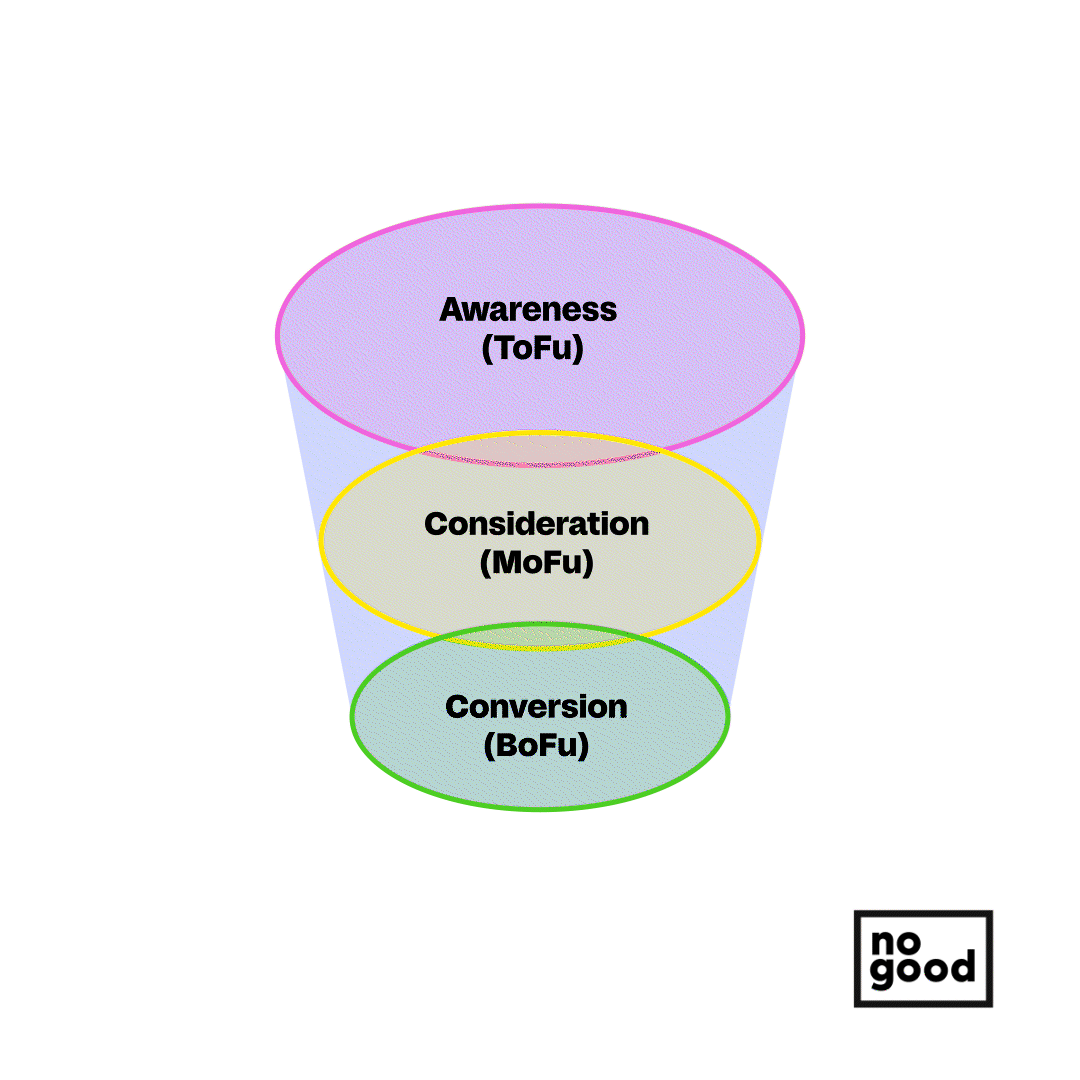
Mental health care company Hims is a good example of how the content marketing loop can be leveraged to acquire new customers and build further brand awareness. Hims creates content with the purpose of providing value to not only potential new customers but also existing customers, targeting satisfied customers in their post-purchase phase so that they might be prompted to share their positive experiences with others in their life. This sharing behavior ideally manifests itself in user-generated content (UGC) on consumers’ own personal social profiles, which brands can then leverage as content pieces to further drive social proof. On TikTok, UGC posts perform 22% better than branded content, which just comes to show how important it is for brands to craft experiences and opportunities to prompt consumers to create UGC.

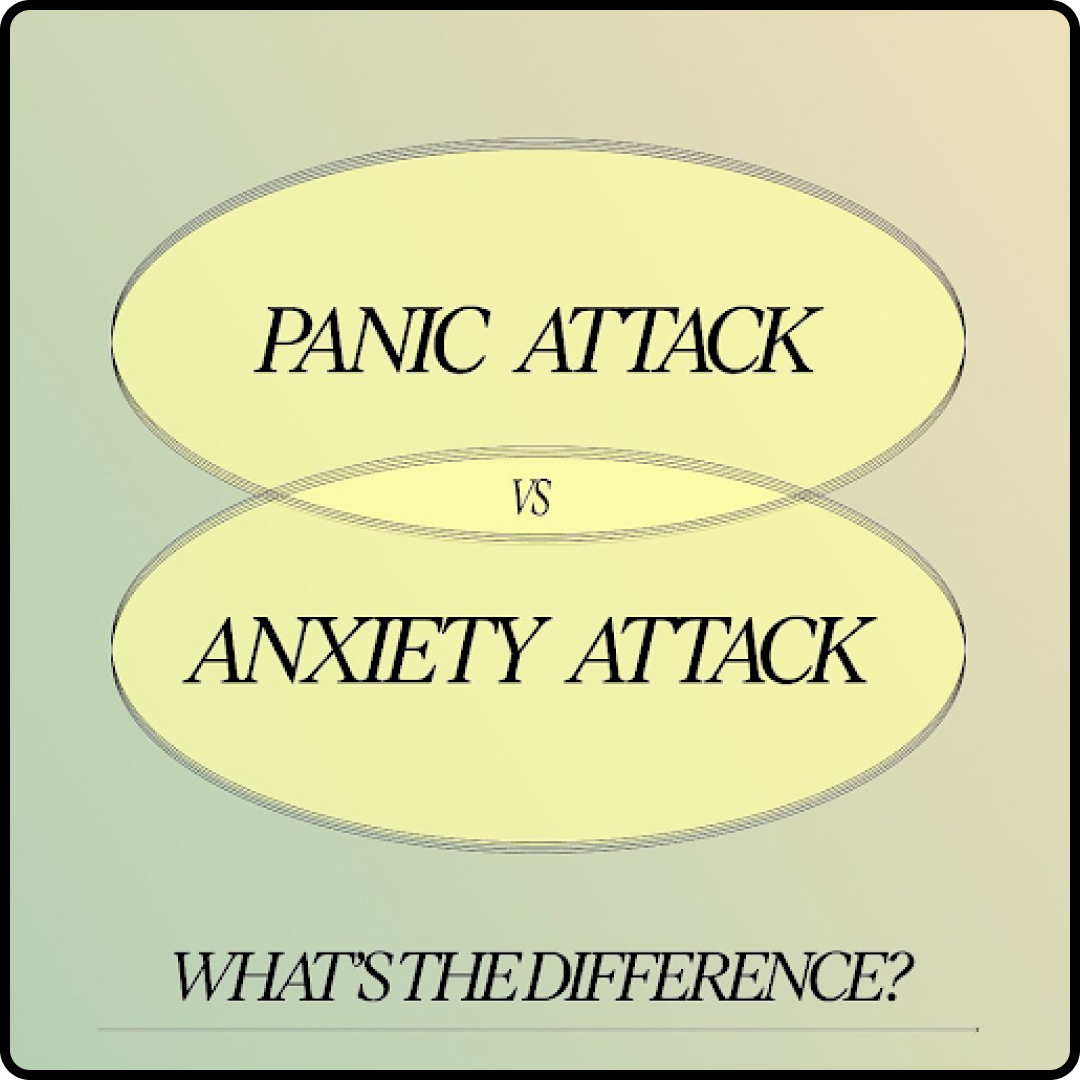
Creating content for the advocacy stage is similar to a referral program, except it’s less pushy and intentionally subtle. Brands should aim to create content that customers will instinctively want to share due to its inherent value. This is why tracking shares rather than mere impressions or general engagement is a great way to measure the success of content at the advocacy stage.
Continuing to use Hims as an example, let’s compare two potential buyer’s journeys: one as a funnel, and the other as a loop.
Funnel Model
Customer A becomes aware of Hims through seeing their TikTok content on their For You page. After watching TikTok, they become interested in the brand and look up the Hims website to do more research. The Hims blog gives them plenty of information to guide them through their decision-making process, including comparing Hims to other similar alternatives. After reading the blog, they’re interested but not quite ready to make the purchase yet, so they sign up for the newsletter via the website’s footer.
A week later, they receive an email from Hims featuring a product that they are now familiar with. They purchase the product and follow the Hims Instagram page to keep up on company updates and potential new product releases. According to the funnel model, this is where the buyer’s journey ends.
…versus the Loop Model
Customer B goes through a similar journey as customer A, going from awareness to consideration, to conversion. After they make their initial purchase, they continue to interact with the brand through their engaging and value-driven social media content. They share humorous branded TikToks with their friends, leave reviews on the brand’s website, and even create UGC content about their positive experience with the brand. All of these engagements or content pieces allow existing customers to become authentic advocates of the brand, which consequently drives brand awareness to the customer’s friends and followers and continues the loop.
How to build a content marketing loop in 3 simple steps
Step 1: Ensure that you’ve got all your bases covered
Build a solid foundation with ToFu, MoFu, and BoFu content that’s targeted towards the awareness, consideration and conversion stages. You can’t build a retention strategy without having a solid customer base to retain, so it’s crucial to focus on driving customer acquisition and building brand loyalty as the first step.
Step 2: Define the channels and content types that foster advocacy
Which channels give you access to your most engaged and loyal audiences? Which of your past content types garnered the most shares? Leverage your brand’s historical data and optimize your content with the goal of driving advocacy in mind.
Step 3: Create content that focuses on retention, advocacy, and shareability
Whether it’s informative blog articles on your industry niche or humorous Instagram posts that aim for relatability and authenticity, start creating content with the advocacy stage in mind. Test different content types, run experiments, and see what generates the most shares and what resonates the most with your brand-loyal audience. Driving advocacy is one of the most difficult aspects of the content marketing process, but given that acquiring a new customer can cost five times more than retaining an existing customer, utilizing your existing customers to aid your acquisition efforts is certainly a worthwhile endeavor.
Here are some ways to use content to drive advocacy and create a loop effect:
- Create incentives for existing customers to leave reviews and use those reviews as social proof in your content marketing efforts
- Stay on-trend and respond to cultural references of industry news in a timely manner to drive immediate shares and engagements
- Repost customer’s UGC to prompt other customers to create similar content themselves
- Host giveaways, interviews, events, and other community-driven initiatives that will bring existing customers and potential customers together within the context of the brand
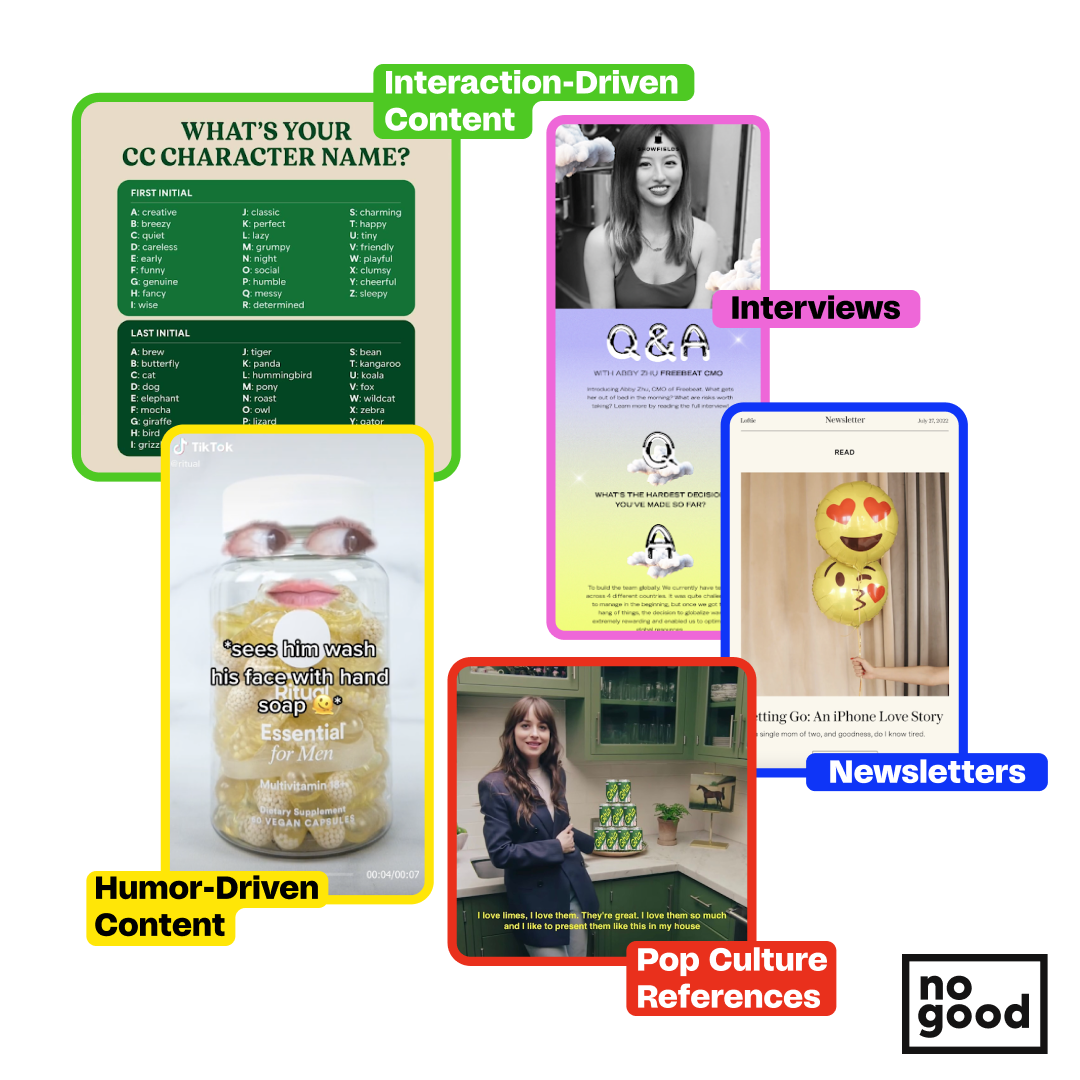
All in all, no matter the content format or the channel, the key is to focus on shareability above all else. You want your customers to be advocates of the brand — and not because you’re paying for ads or because you’re hiring them as in-house content creators, but simply because they genuinely want to share their experiences with similar people in their niche communities.
Ready to turn your content marketing funnel into an organically-growing loop? Talk to our experts at NoGood about content marketing services today to see how we can help make that happen.





